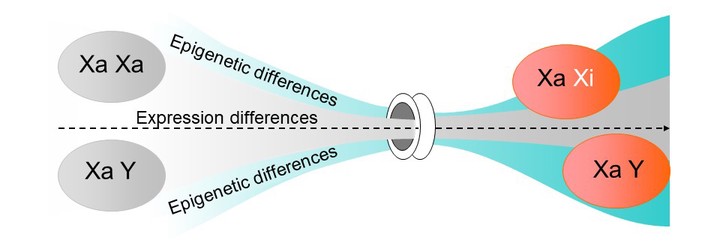Hypothesis article published in BioEssays
Sex Differences in Early Embryogenesis: Inter-Chromosomal Regulation Sets the Stage for Sex-Biased Gene Networks
 Figure 2. Schematic of our hypothesis
Figure 2. Schematic of our hypothesisAbstract
Sex-specific transcriptional and epigenomic profiles are detectable in the embryo very soon after fertilization. I propose that in male (XY) and female (XX) pre-implantation embryos sex chromosomes establish sexually dimorphic interactions with the autosomes, before overt differences become apparent and long before gonadogenesis. Lineage determination restricts expression biases between the sexes, but the epigenetic differences are less constrained and can be perpetuated, accounting for dimorphisms that arise later in life. In this way, sexual identity is registered in the epigenome very early in development. As development progresses, sex-specific regulatory modules are harbored within shared transcriptional networks that delineate common traits. In reviewing this field, I propose that analyzing the mechanisms for sexual dimorphisms at the molecular and biochemical level and incorporating developmental and environmental factors will lead to a greater understanding of sex differences in health and disease.